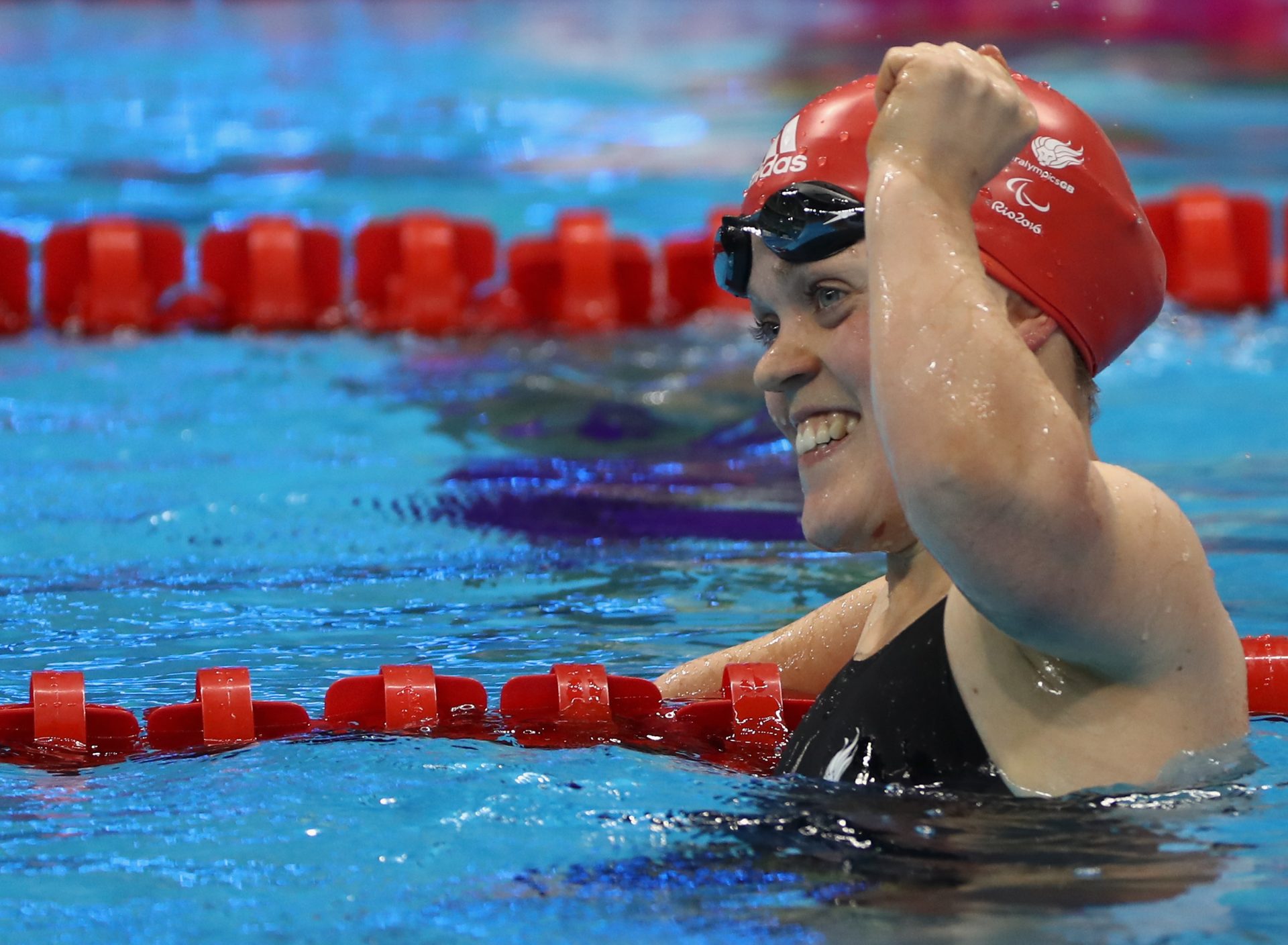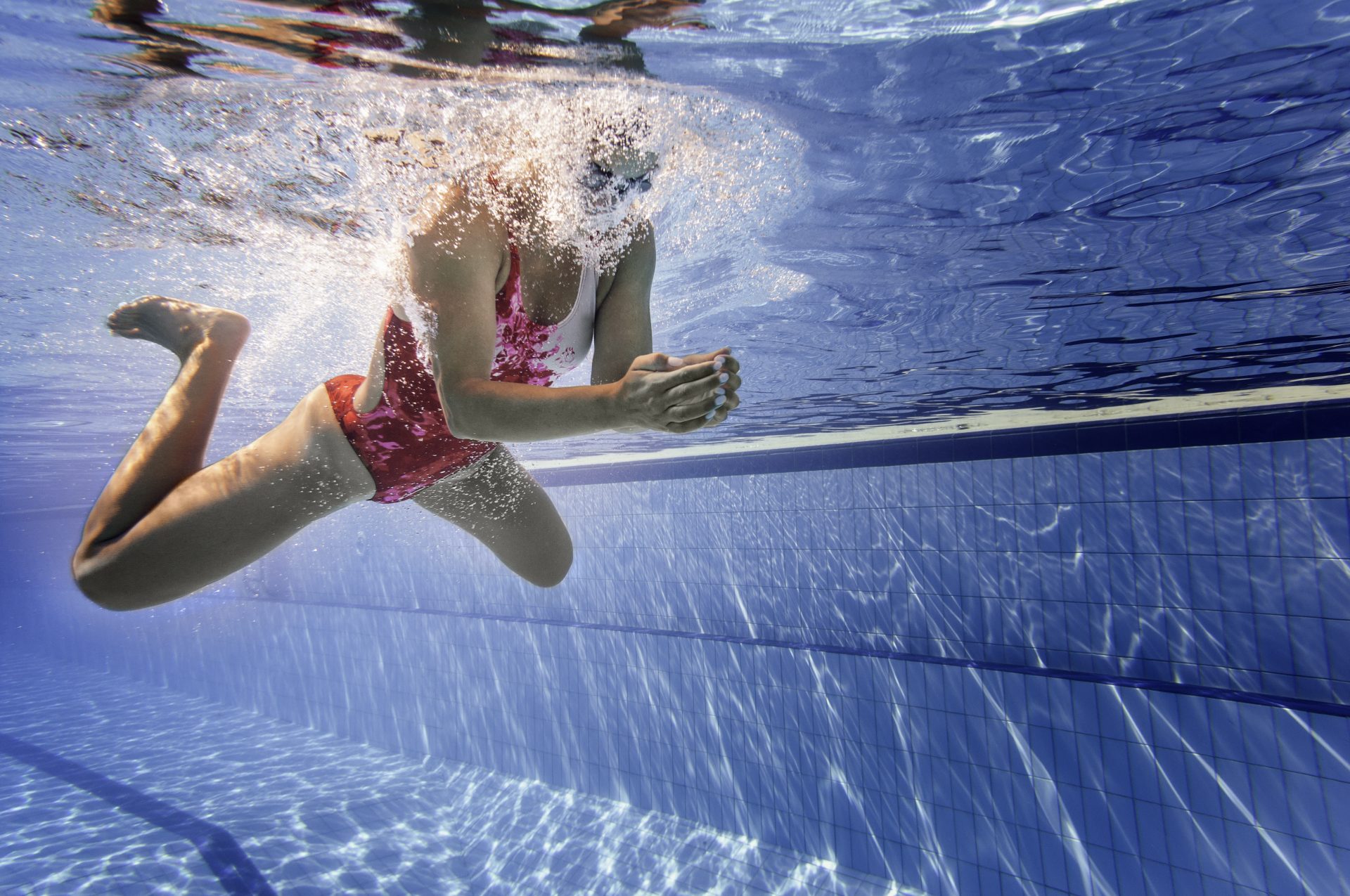Breaststroke is a better workout than you probably think — here’s why
If you’re the kind of swimmer who resolutely sticks to breaststroke in the pool, then you need to read this.
You’re heading to the pool and have to choose which lane to go in. The fast lane is full of people thrashing along doing front crawl and the slow lane seems to be the domain of swimmers who prefer to do breaststroke at a more leisurely pace. This is, of course, totally fine (it’s the whole reason why most pools have lane-based swimming sessions), but where do you go if you’re a confident swimmer who doesn’t want to do front crawl and feels a bit intimidated by the fast lane?
This is one of the issues I find myself facing when I visit my local pool. I love swimming; it’s the sport I’m most proficient at, it gives me an energy boost and is great for my mental health. And I’m quite fast, but I just can’t do front crawl. I could swim breaststroke for hours and hours – but for me, front crawl is exhausting and no fun and I can only ever manage a few lengths at a time.
You may also like
“Forget wild swimming – I’d rather swim in the local, no-frills indoor pool any day”
Front crawl, or freestyle as the professionals call it, is the fastest swimming stroke, but some people can find it difficult to master because of the tricky breathing technique. Telle Maukonen, coach at SwimTrek and Tooting Bec Lido, sums it up perfectly when she says: “In front crawl, you’re supposed to have your face in the water most of the time, exhaling against the pressure of the water – you’re sideways when you breathe in, and all the while your arms and legs are moving asynchronously. There’s a lot going on all at once!”
This is why I love breaststroke. I can breathe properly – an obvious bonus when exercising –and I know I’m not going to crash into anyone. Also, it’s less splashy.
But Paralympic champion Ellie Simmonds says breaststroke isn’t necessarily the easy option. She tells Stylist that it can be difficult to break down the stroke: “First, work on your legs and how they both move, while keeping the ankles fixed. Then think about your arms and the scooping motion. You need be able to do all of that while keeping the head relaxed.”

The difficulty is something Maukonen agrees with: “I don’t think breaststroke should be minimised as a lesser stroke – to make breaststroke as efficient as it can be requires a lot of technique and timing development and there is a lot of scope for improvement in breaststroke for swimmers of all levels.”
James Kirton, who swam breaststroke at the 2008 Beijing Olympics and is now a swim coach at Swim Skills, says: “On a scale, I’d put it as the second most physically demanding after butterfly.”
“I think there’s a stigma about the head-up breaststroke being a social stroke for the elderly, but it’s not, it’s a great workout for anyone that can have a go at it,” he adds.
I know I love breaststroke and that I’m probably never going to be a fast lane front crawler, so I thought I’d also delve a little deeper into the benefits it brings in terms of fitness and muscle strength.
Breaststroke is great for strengthening your legs
In order to tone muscle, you have to work against resistance. When you’re swimming, the water provides resistance for your muscles to fight against when kicking and using your arms to propel you through the water. Water is more resistant than air and land, so when you’re swimming your muscles are working harder than if you were doing a land-based activity. This means some people see changes to their body faster when swimming than when doing other sports.
When you swim breaststroke, your legs are responsible for 70% of your forward propulsion through the water, which means they have to work harder than in other strokes. Your adductor and abductor (inner and outer thigh) muscles also come more into play than with other strokes.
Maukonen says: “If you are doing the leg kick properly, you are exercising all your leg muscles right from your feet and ankles through your calves, quads and hamstrings, right up to your glutes.”
You’re continuously working your arm and chest muscles
The signature out-and-in-sweep motion of breaststroke is excellent for strengthening your arms, chest and upper back. “Although the main power comes from your legs, honing the technique in your arm pull when you breathe works not just your arms from your hands right up to your biceps and triceps, but also your lats and your pecs,” says Maukonen.
Breaststroke is also a great core workout
The breaststroke ‘frog’ or ‘whip’ kick uses your core and abdominal muscles more than front crawl. To get the most from your swim, it’s important not to let your hips drop in the water. Your legs should be behind you rather than below you, so try to ensure you’re as horizontal as possible.

It’s great for your heart and lungs
While breaststroke uses less energy than other strokes, many people find they can swim it for longer and over greater distances, which is good for your overall cardiovascular health. Breathing out into water and resisting water pressure against your chest can also improve your lung function.
There are always ways to increase the intensity of your swim
If you want to raise your heart rate and give yourself a more intense workout, why not give sprints a try? Maukonen says: “Splitting your swimming session into a warm-up, followed by some focused technique/drill work, followed by a bit of speed work can be a great way to vary your workout.”
You could also try adding weights to your ankles and arms to challenge your upper and lower body muscles more. This will all contribute to full body toning and improved stamina.
Breaststroke can give you give face-down-in-the-water confidence
“If the reason you’re not confident in front crawl is because of the ‘face-down/world-being-sideways-ness’ of it all, you could use the stability and ‘right-way-upness’ of breaststroke as a good way to develop the face-down confidence required for front crawl,” says Maukonen.
She recommends initially just putting your mouth and nose in the water and exhaling during the gliding phase of breaststroke while still looking forward. Then you can gradually lower your whole face under the water and look down, which will help you get used to the sensation of being face down.
Hopefully knowing these benefits will help you get the most from your swimming sessions, but as Simmonds says: “Any swimming stroke is amazing for the movement of the body and for the mind.”
It’s worth noting, however, that breaststroke puts more pressure on your hips, knees and back than other strokes. If you’ve had any problems with these parts of your body, make sure you speak to a physio or doctor about whether it’s safe for you to swim or if there are any adaptations you should make.
Images: Getty
Source: Read Full Article
